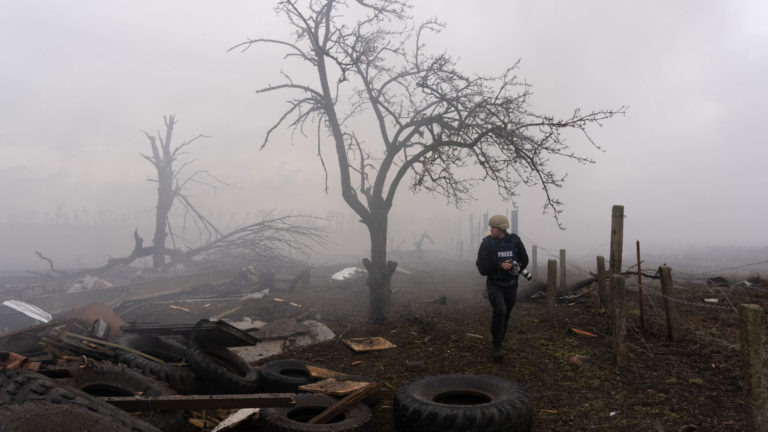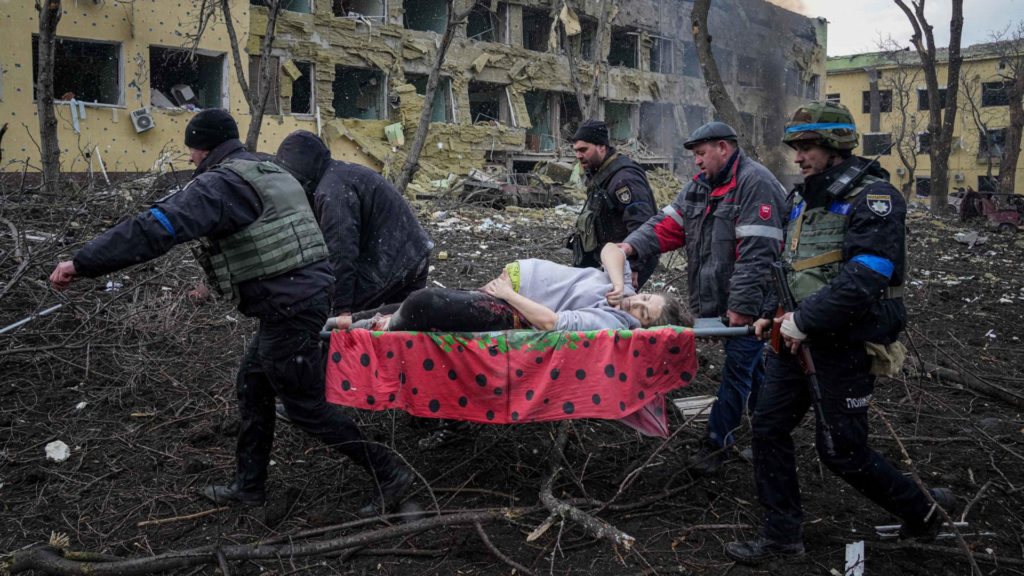
One of the primary functions of documentary filmmaking is to educate audiences, and to expose something previously unknown to a wider breadth of people. The hope is that the world learning about an injustice will help to prevent it from happening again. Yet, unfortunately, that’s not always the case, and history all too often repeats itself even before it has the chance to become a thing of the past. The efforts made by journalists in the Ukrainian city of Mariupol to document their experiences in early 2022 comprise the powerful and harrowing documentary 20 Days in Mariupol, which makes its world premiere at a time when the world has seen much of their footage yet has not acted decisively to help end the conflict.
Director Mstyslav Chernov shares how he and his team of journalists made it to Mariupol as the Russian onslaught of Ukraine was beginning in February 2022, aware of the dangers posed to them but determined to get the story out of what was happening to the people there. They are forced to move repeatedly and often without warning as hospitals become defunct after being bombed and their pathways to getting out of the city are increasingly cut off, possible only through humanitarian convoys that are infrequent and in some cases not operating as planned. They know the importance of showing the world what is happening and are set on filming whatever they can.

One of this film’s most intense – and unsettling – assets is how footage that has previously been seen within the film is shown again later when it is being broadcast on global and national news channels. The unreliability of Internet and service means that Chernov’s team cannot send in what they have filmed consistently, and there is a sense of urgency that comes due to the potential for their footage to be destroyed in an attack or, worse, apprehended by Russian forces, which will then put their lives in even greater danger. But when the clips can be successfully uploaded and sent, they appear on television to tell the same story that this film is telling, one of immense suffering of the people being invaded and no end in sight.
That so much of what Chernov and his fellow journalists filmed was broadcast to the world and that the situation remains largely unchanged, if not much worse given that Mariupol has been under Russian control since May, is disheartening. The existence of video evidence gives way to claims that it is all part of fake news, and that actors have been hired to portray doctors who shout at the camera that they are crying because of the many young and innocent lives lost. It’s horrifying to think that, even in an age in which social media and the internet can serve to connect the world and make them aware of atrocities that are being committed, there are still those who move to suppress and outright deny explicitly truthful information.

Chernov makes a distinct effort in his reporting to get names of the people he speaks to so that any vetting that might occur will only serve to strengthen his case, but, understandably, people are unwilling to talk for fear of retribution against them. The journalists remain committed to capturing the humanity and the specificity of the victims, lamenting the fact that there are so many whose stories will not be told and who will never be identified. This documentary serves as a potent and vital call to action, regarding both the still-active conflict in Ukraine and the need for the experiences of others to serve as a guiding tool to enact a different future.
Grade: B+
Check out more of Abe Friedtanzer’s articles.
20 Days in Mariupol makes its world premiere at the Sundance Film Festival in the World Cinema Documentary Competition.

